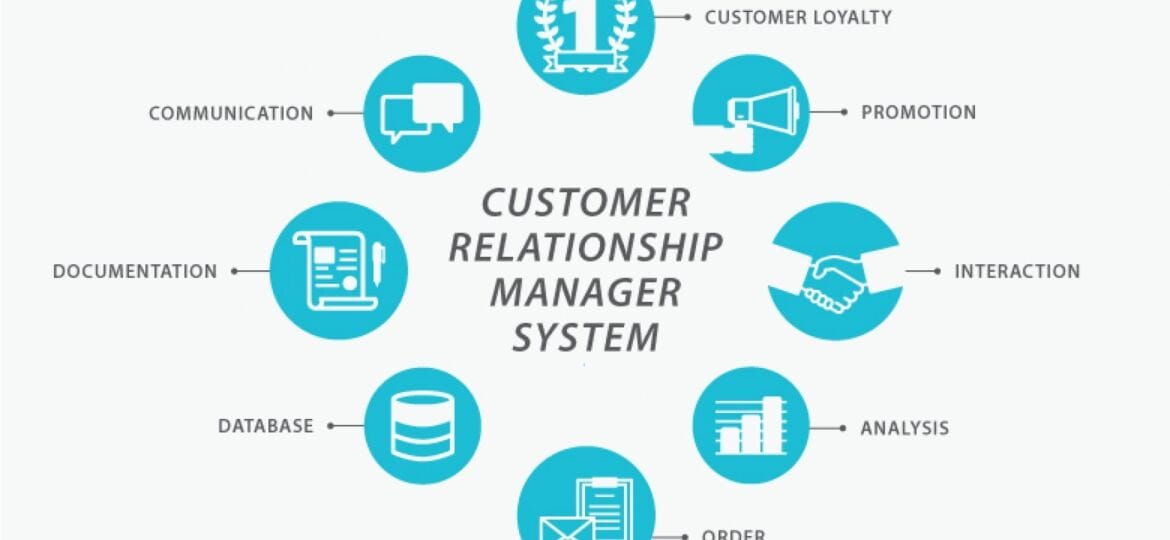
What is Customer Relationship Management?
Customer Relationship Management (CRM) refers to the methodologies and tools that help businesses manage customer relationships in an organized way. Sometimes, CRM is referred to as customer service management.
For small businesses, CRM includes:
- CRM processes that help identify and target their best customers, generate quality sales leads, and implement marketing strategies with clear objectives.
- CRM procedures that help form individualized relationships with clients to improve customer satisfaction and provide the highest level of service.
- CRM tools that give employees the necessary information to understand customer needs and build strong relationships.
CRM Tools and Their Importance
Customer relationship management tools include software and browser-based applications that collect and organize customer information. For instance, a business might use a database of buyer information to conduct customer satisfaction surveys or determine which new products interest their audience.
Moreover, a successful CRM strategy involves more than just software. It is a combination of enterprise strategies, business processes, and technologies designed to understand client needs and build stronger relationships. As a result, the ultimate goal is to develop and implement smarter customer strategies to maximize customer profitability.
To gain a deeper understanding of CRM solutions, visit Psycray.
Benefits of CRM Implementation
CRM initiatives help businesses meet customer expectations and maximize customer lifetime value. Additionally, companies can provide detailed product information, such as how to use the product, its ingredients, and contact details for further assistance. With a well-implemented CRM system, businesses can communicate effectively with customers through various channels, ensuring personalized interactions.
Furthermore, a well-integrated CRM system helps businesses stand out by offering superior customer service. Understanding which channels work best for each customer enables companies to provide relevant information that increases customer engagement and loyalty. Learn more about CRM solutions for businesses at Psycray.
Sales Force Automation in CRM
One example of CRM is Sales Force Automation (SFA). It streamlines the sales process by reducing the time spent on manual data entry and administrative tasks. As a result, sales teams can focus on engaging with customers efficiently.
Key features of SFA include:
- Contact management for tracking sales processes.
- Opportunity management and sales forecasting.
- Workflow automation, quote creation, and product knowledge.
- Web 2.0 e-commerce modules and pricing management.
To explore more about AI-driven CRM, visit AI development solutions.
Customer Service and Support
Customer Service and Support is another variation of CRM. Many organizations use technology platforms to improve customer experience while controlling costs. However, studies show that only 39% of corporate executives believe their employees have the right tools to solve customer issues.
Moreover, call center management remains at the core of customer service, incorporating features such as:
- Intelligent call routing and computer telephone integration (CTI).
- Escalation capabilities and web self-service.
- Knowledge management, email response supervision, web chat, and virtual assistants.
Additionally, Software as a Service (SaaS) platforms are gaining popularity due to their rapid deployment, low initial costs, and effectiveness in large contact centers. Businesses looking to leverage AI for customer service should explore AI development solutions.
Writing Effective White Papers for CRM
A white paper is an authoritative report that explains an issue and presents a solution. Originally a governmental tool, white papers are now widely used for technology and business marketing.
Key Elements of a White Paper
- Understanding the reader’s perspective.
- Identifying the problem before presenting a solution.
- Using clear, concise language to engage readers.
White papers can be written in two ways:
- Self-Interest Approach: Focuses on a product’s benefits and features, often ineffective in engaging readers.
- Reader-Centric Approach: Focuses on customer challenges and presents solutions to establish credibility and attract qualified leads.
To make a white paper effective, businesses should ensure readability and structure their content well. For more insights into using AI in business strategies, check out AI benefits for businesses.
Why Businesses Need CRM
CRM helps businesses stand out by providing better customer insights and personalized interactions. Companies that leverage AI-powered CRM solutions can better predict customer needs, streamline operations, and improve engagement. Furthermore, businesses can enhance customer relationships by integrating effective CRM strategies.
For additional insights, explore more at Forbes and HubSpot.

